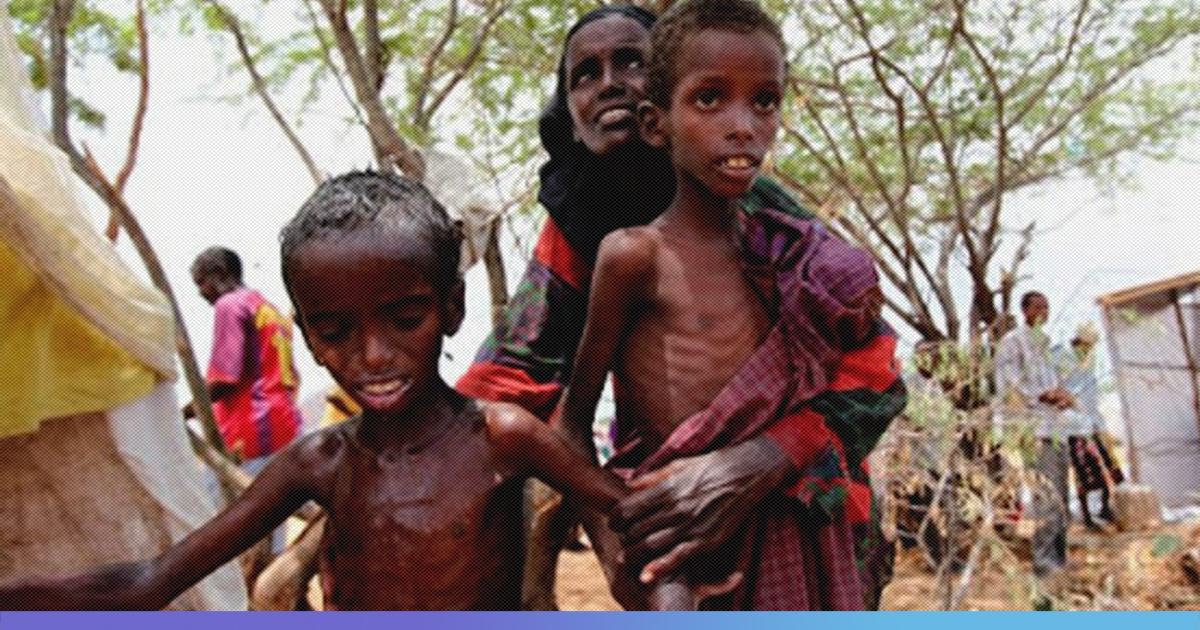The sight of babies with swollen heads and their stick-thin limbs poking through their lean tissues is an image that will move any onlooker. Nursed by their helpless mothers, these are the faces of those left destitute by the bloody war in Yemen.
As the Worst Humanitarian Crisis descends over the Arab country of Yemen, the 2019 Humanitarian Needs Overview estimates that 24.1 million people, which is roughly 80% of the population of Yemen, require some form of humanitarian assistance. This disastrous war between the Government and the Houthi forces has stretched over 4 long years and has tormented millions of civilians, depriving them of basic human rights and edging them towards a famine.
On Twitter, in June 2018, Omani researcher and writer Zakaria al-Mahrami likened the situation lead by Saudi-coalition-forces in Yemen to a “holocaust” with the projected famine death toll three times over the number of Jews prosecuted during Hilter’s reign.
The death toll over the last four years has amounted to 10,000 people and over 3 million were forced to flee their homes due to the ongoing violence.
Up to 14 million people are facing acute starvation which might cause the worst ever famine in the living memory.
With the war, the worst ever cholera outbreak was also triggered. In December 2017, the International Committee of the Red Cross announced that around one million cases of cholera have been reported in Yemen since the outbreak began, killing over 2,200 people, according to the World Health Organization.
The UN agency data (2019) shows:
17,700 civilians have died or been left injured in the four-year-long bloody war
3.3 million people remain displaced
17.8 million people lack access to safe water and sanitation
19.7million lack access to adequate healthcare.
In a donor conference in Geneva in April last year, United Nations Secretary-General Antonio Guterres said, 8 million people in the country “did not know where they will obtain their next meal,” and that “every ten minutes, a child under five dies of preventable causes.”
The United Nations donor conference has managed to collect $2.6 billion dollars of the proposed $4bn needed to address the crisis. And the major donations come from Saudi Arabia and the United Arab Emirates (UAE) who pledged $500m each.
Often called ‘the forgotten war’, the situation of the people of the country wreathing under war is overshadowed by Syria and Middle Eastern terror groups.
What Started The War?
When the Arab Spring prompted a wave of political transition across the middle east, Yemen too saw its longtime authoritarian president, Ali Abdullah Saleh step down. He passed the baton to his deputy, Abdrabbuh Mansour Hadi, in 2011.
However, the road ahead for President Hadi hosted a range of problems from attacks by jihadists to corruption, unemployment, food insecurity and the continuing loyalty of the security personnel to former leader Saleh.
Houthis, who were active rebels during Saleh’s reign, took advantage of new president’s weakness and gained in on the Northern province of Saada. Many Yemenis disillusioned by the transition supported the Houthis and this was the starting of the Yemen War.
Beginning in early 2015, Iran backed Houthi rebels drove out the US-backed Government led by President Abdu Rabbu Mansour Hadi. This Suni minority group from the north of the country took over the capital of Sanaa and this caught Saudi Arabia’s interest. The feud dates back to the beginning of Ayatollah Khomeini reign in Iran, the Sunni Saudis and the Shia Iranians have always been at odds and have waged proxy wars against each other all over the Middle East.
But the war in Yemen has been at a stalemate for four years as of now. Saudi-UAE led coalition began air raids in support of Hadi’s government in March 2015, but till date has been unsuccessful in driving away the Houthi rebels from the capital Sanaa. Terror outfits like Al-Queda and the ISIS have capitalized the situation and grown stronger during the unrest.
Where Yemen Stands Now
In accordance with the ceasefire deal reached in Sweden in December, Houthi forces began to pull out their forces from the key port of Hodeidah, and the two ports of Saleef and Ras Isa, over a week ago on 11th May. UN considered this the ‘first full day’ of the Houthi withdrawal from three of Yemen’s Red Sea ports and believed it went “in accordance with established plans.”
The internationally recognized Yemeni Government, however, believed this to be a ‘deception’ and a ‘show’. Less than a week later, fresh ceasefire violations resounded as Houthi and Saudi-backed pro-government forces clashed in the port city of Hodeidah on the 15th of May followed by Saudi-led-coalition air raids in Sanaa, pushing peace talks back into the realm of delay.
In another weather-induced turn, a thunderstorm has now broken over much of the southern Arabian Peninsula and is expected to cause flooding in parts Yemen. This will only add to the piling woes and further worsen the humanitarian crisis in the country.
Also Read: Emaciated Yemen Girl Whose Picture Symbolized War And Famine, Dies











